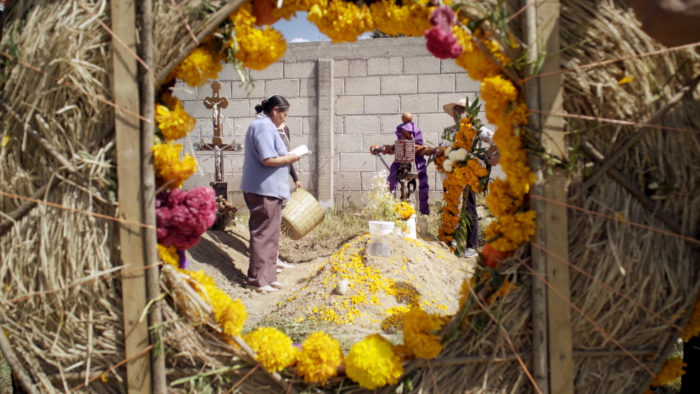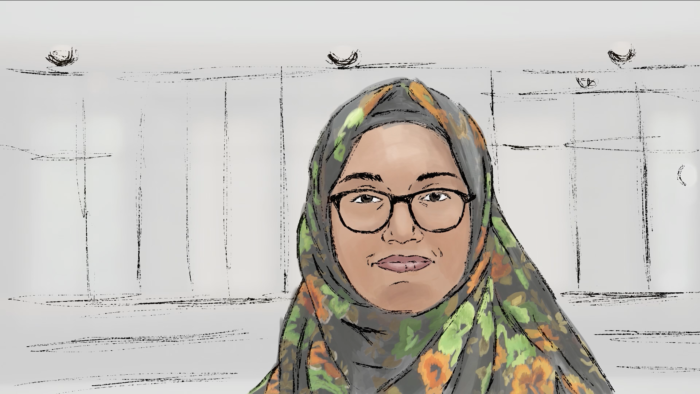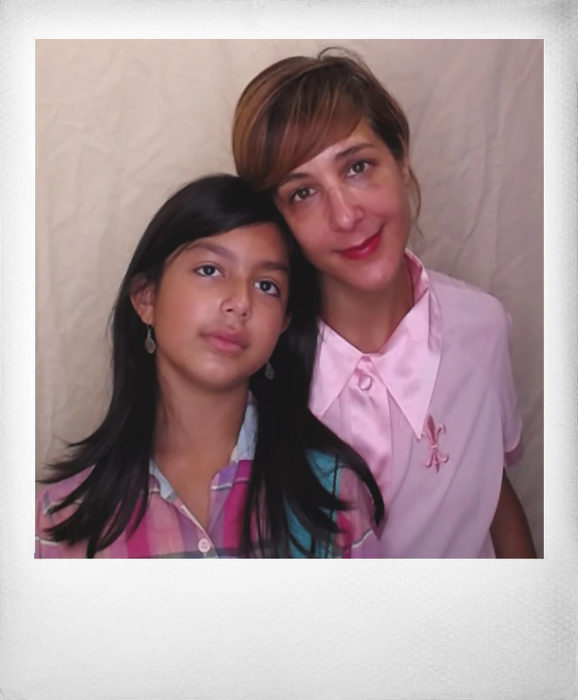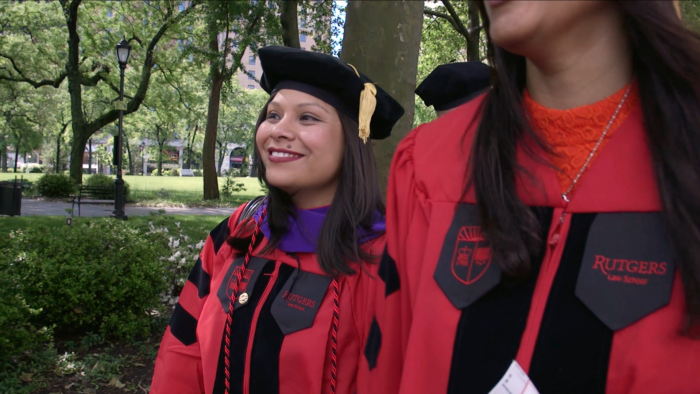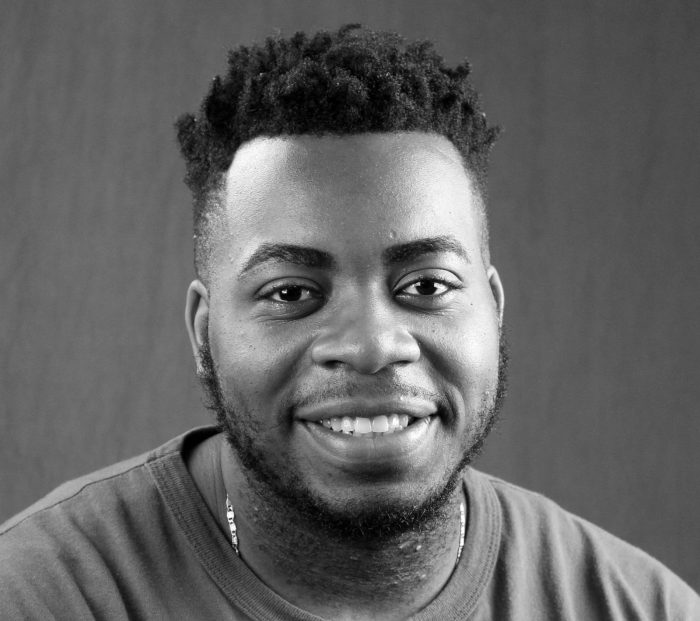Abu Bakar meets us in front of a daycare center he operates, in a building he owns. At 53, he is lean and determined and intensely guarded. His trust is hard-earned, and he has taken months to vet me before agreeing to be interviewed.
Photographer Ed Kashi and I enter the basement of his building, which has been converted into a classroom for CPR training. The smell of mildew pervades the air as Bakar starts to recount his story. He has traveled a long distance, from being a youth activist in 1994 in Sierra Leone during a civil war, to narrowly escaping through the ceiling of his home when armed guards arrived at the front door. From there he fled on foot to Guinea, where he used his entire savings–$1000–to buy a passport and plane ticket. When he arrived at JFK airport in New York, he thought he could finally exhale. Unfortunately, a new chapter of suffering was just beginning.
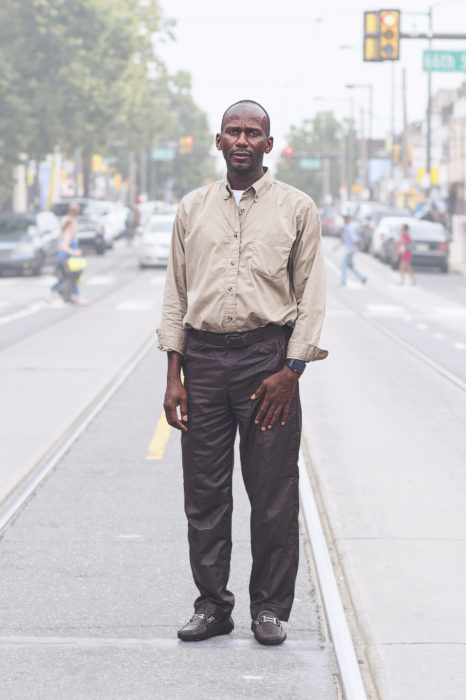
Abu Bakar
4:39
When the immigration officer asked Bakar if he was carrying his own passport, he responded, “That is not my passport. I was running for my life, so I’m trying to seek asylum in this country.” His honesty earned him shackles and a rough van ride to Esmor Detention Center in Elizabeth, New Jersey. Bakar would now be known as “Number 10”: The tenth person to be taken into custody at the facility when it opened in 1994.
When Bakar pleaded for information, he was told by a guard, “We’re taking you to jail because you’re a criminal,” he recounts. “They tied my hands behind my back with a rope. Like, if you go to war, the rope they use to tie the rebel’s hands. I said, the chain is too tight. He said, you don’t have no rights in this country, even we can kill you, nobody would know.”
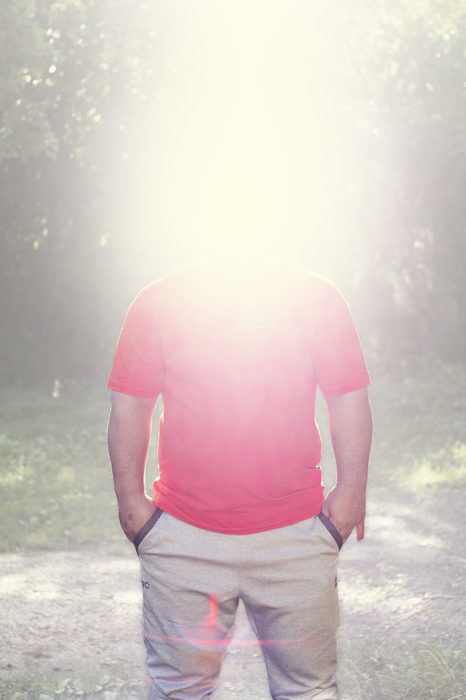
Ahmed
3:37
What transpired next creeps from the dark annals of American immigration policy and epitomizes a failed tactic gone horribly wrong. This is the same policy that informs our current lust for detention and deportation. Abu Bakar’s tale is a parable for the potential pitfalls of hasty and excessive incarceration in lieu of a humane civil process. It is a tale with roots in our country’s founding, repercussions from laws signed by Bill Clinton, and implications for our current precarious state where detention has become widely accepted, if not embraced. Since Donald Trump took office, non-criminal arrests by ICE are up 150% percent according to the Department of Homeland Security — an uncannily familiar set of circumstances to the mid 1990s, when Bakar’s fate took a nightmarish twist.
While Bakar was at Esmor, he was subjected to mental and physical abuse by the guards, who regularly threatened deportation and used dogs to intimidate their captives. He was forced to wash with chemicals that made his skin burn and peel; he was fed rancid food and told to shower in plain view of female guards; he worked long hours in the kitchen for $1 per day. As the weeks passed, the facility filled to capacity and beyond. The entire time, Bakar had no idea how long he would be held or what he could to affect his destiny.
Lawyers and detainees complained to officials about overcrowding, unsanitary conditions, lack of medical care, property theft by guards and sleep deprivation due to bright lights 24 hours a day at Esmor. Detainees reported being beaten, harassed, ridiculed, and sexually assaulted by guards, who were underpaid and poorly trained.
“It really was a hell hole,” says Penny Venetis, Co-Director of the Constitutional Rights Clinic at Rutgers Law School. “The training was so deficient that the guards who worked there didn’t even know what the population was going to be, so they thought that they were going to be watching over criminals.”
Kou Cecile Jeffrey, an immigrant from Liberia, described the chaos when a riot erupted at the Esmor Detention Center on June 18, 1995. She says the detainees turned the facility “upside down.” Many guards fled or hid. One hundred local police officers in riot gear moved in to manage the uprising, which resulted in 20 injuries and $100,000 in damage.
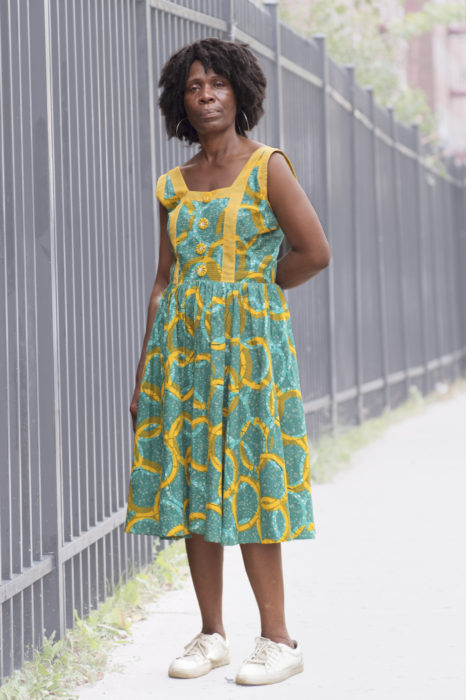
Kou Cecile Jeffrey
2:48
After the riot, the facility was closed and all of the detainees were either deported or transported to other detention centers across the region. The Corrections Corporation of America took over the facility, which reopened in 1997 and has operated there ever since. Esmor rebranded as Correctional Services Corporation (CSC) and continued to operate juvenile detention facilities under the name Youth Services International (YSI). YSI operated in 16 states, including Florida, where prisoner abuse and deaths resulted in a state takeover. In his investigative story, “Prisoners of Profit” in the Huffington Post, journalist Chris Kirkham exposes the sordid abuses of CSC and its corrupt CEO, James F. Slattery, who ran “afoul of the Justice Department and authorities in New York, Florida, Maryland, Nevada and Texas for alleged offenses ranging from condoning abuse of inmates to plying politicians with undisclosed gifts while seeking to secure state contracts.” Over two decades, more than 40,000 boys and girls went through one of Slattery’s juvenile prisons, where they “frequently faced beatings, neglect, sexual abuse and unsanitary food.” CSC was eventually acquired by the Geo Group, which now runs one of the largest detention centers in the country in Adelanto, California, where there were five attempted suicides and three deaths between March and August last year.
The Esmor incident was the direct result of an immigration policy defined by perverse incentives. Prior to the Illegal Immigration Reform and Immigrant Responsibility Act of 1996, signed by President Clinton, detention was used as an interim between deportation or release. The new law expanded the classes of non-citizens subjected to mandatory detention and allowed retroactive deportation for past crimes, including nonviolent offenses. The result was an explosion of the detainee population.
Going into 1994, the INS held roughly 5,500 detainees in custody; this number tripled within four years. Today, that number is nearly 80 times higher. Last year, almost 400,000 immigrants were detained in the United States at a cost to taxpayers of $5 million per day. Quotas were established, beds were contracted that had to be filled, and the era of profiting off of human captivity was firmly established.
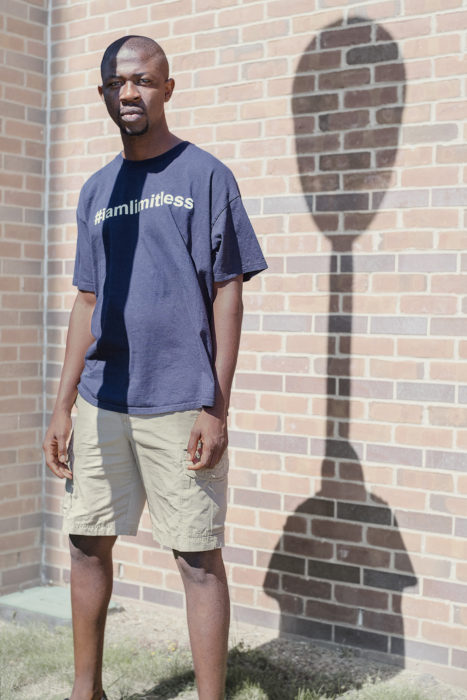
Edafe Okporo
3:47
It is no coincidence that as the Clinton administration was overhauling immigration policy, the two largest private prison companies, Corrections Corporations of America (CCA) and Geo Group (formerly known as G4 Secure Solutions), lobbied for enhanced detention. This highly profitable industry was too seductive to ignore, and the “War on Drugs” had fueled a gusto for criminalization as the antidote to society’s ills. Incarceration became the placebo for America’s anxiety, and the rising numbers of immigrants from black and brown countries were easy scapegoats for a nation trying to pull itself out of economic insecurity and high levels of crime. The lobbying paid off and today, CCA and Geo Group account for two-thirds of all immigrant detainees.
“Prior to the birth of these two private prison corporations, there were only about 30 people held in immigration detention on any given day,” says Christina Fialho, co-founder of CIVIC, an immigrant detainee advocacy organization. “Now there are 40,000 and that’s because these private prisons have lobbied for laws, not only at the federal level, but at the state level that would allow for the expansion of immigration detention.”
Abu Bakar was one of 20 asylum seekers detained at the Esmor Detention Center who filed a lawsuit alleging inhumane conditions of their confinement. Jama v. Esmor was filed by Penny Venetis of Rutgers Law School, and Bakar claims to have been the lead organizer among the detainees, many of whom were frightened to speak up. After a number of settlements, deportations, and voluntary withdrawals, nine plaintiffs remained when the court ruled that detained foreign nationals could sue a private U.S. corporation for international human rights violations. This groundbreaking case marked the first time that non-U.S. citizens could sue a private U.S. corporation for violating their human rights.
If history is our best teacher, have we learned from past mistakes?
Last year was the 20th anniversary of the Jama v. Esmor decision, so photographer Ed Kashi and I have come to Philadelphia to learn firsthand about Bakar’s experience. We arrive at a commercial strip lined by West Indian grocers, signs for international phone cards, restaurants with names like Le Mandingue and Ackee Tree, and flags from Eritrea, Rwanda and Gabon billowing from the street lamps. We’ve entered an alternate version of America, one where heavily accented English is the norm, and people become insiders through their shared outsiderness. This is a place where people understand hardship—having been pushed from somewhere rather than drawn to somewhere. We are here to explore whether history has taught us anything about our past mistakes.
For years, I have driven past the detention facility where Abu Bakar was held on my way to Newark Airport and never even noticed it. Distracted by some impending arrival or departure, it has been all too easy to remain oblivious to the desperation hidden in plain sight. Detention facilities are often located near airports, and deportees are typically removed under cover of night, rustled from their beds and extricated as stealthily as possible. As one former detainee, Juliet Horton, described, “Most of the people in detention were deported at night, when everybody slept, so nobody could see the misery of it. They would bring special forces so they kind of physically would grab the person and take them to the plane.” She then asked, “If you’re so proud of it, why wouldn’t you do it in daytime in a legal way?”
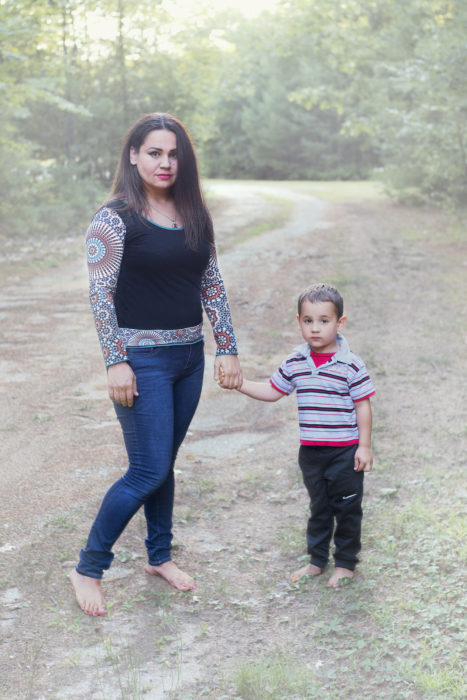
Juliet Horton
7:01
A week before our trip to Philadelphia, Kashi and I pay a visit to a recent Elizabeth detainee, Chause Kagesera, who was released just three months prior. In Uganda – where homosexuality is illegal – Kagesera was kidnapped by government agents and tortured for being gay. He was sequestered in a house for three weeks, where he was forced to kneel the entire time and was beaten with a hammer. His captors tied a rope to his penis and suspended a brick into a hole below. When he started urinating blood, one of his captors finally took pity and released him under cover of night. Kagesera was taken in by a sympathetic pastor, who hid him for over a year.
On a quiet suburban street in northern New Jersey, Kagesera waits near the front door of a small white house with a large American flag. Since being released from Elizabeth Detention Center, he has been living with a volunteer from First Friends of New Jersey and New York, an advocacy organization that helps detainees both inside facilities and after their release. (First Friends is one of the only organizations detainees learn about, thanks to fliers posted inside the facilities.) Wearing a Beatles t-shirt and flip flops, Kagesera’s soft-spoken demeanor betrays his physical stature. He ushers us into the house, which feels so still it is constricting. The man in front of us seems vulnerable, fragile, like someone waiting for his spirit to rejoin his body.
Kagesera, who is a chef, left for the United States with a visa to attend a conference on catering and nutrition. When he arrived at JFK Airport, he told the immigration officer he was seeking asylum. “To my surprise, from the airport, I was put in cuffs on my arms, my legs, and on the waist,” he tells us. “I thought maybe these governments work together so maybe they’re taking me back home. At one point, I wanted to tell them that if you’re taking me back home, it could be better if you killed me from here.”
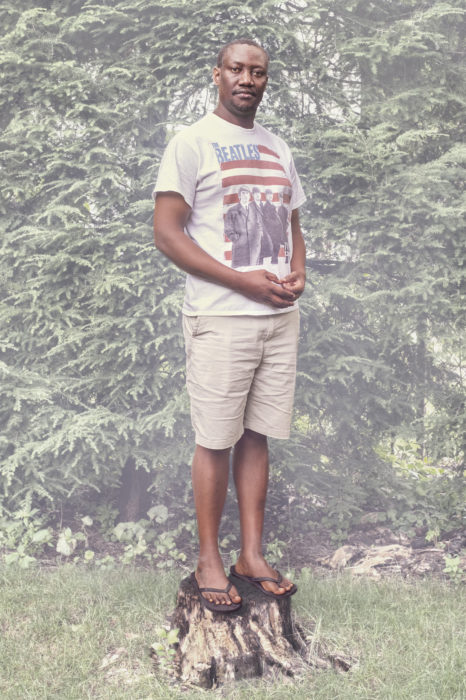
Chause Kagesera
4:34
At the Elizabeth Detention Center, Kagesera shared a dorm room with more than 20 people while other rooms had more than 40 inhabitants. He describes his five month stay as a struggle to remain level-headed while the minutes dragged by. Detainees are given less than an hour to exercise each day; they sit on their beds and bide their time the rest of the day. Many detainees take sedatives to calm their nerves, he says, but he avoided sleeping pills despite having nightmares. His blood pressure rose during his stay, for which he received medication, but it precluded him from getting a job in the kitchen. While some of the guards were decent, he says others took away his blankets, spare t-shirt and the fruit he had saved to break a one-week fast. “I told some guards, why don’t you treat us like human beings? We are human like you,” he says pleadingly.
While Kagesera was not physically abused during his detention, the same cannot be said for others I interviewed. Ravi Ragbir had his head slammed against a wall by a guard while he was at the Perry County Jail in Alabama. Juan Hoyos was beaten up three times by gang members who were also being detained. He says the guards did nothing. According to the ACLU, nearly 200 sexual assault claims have been filed against detention facilities in the past decade.
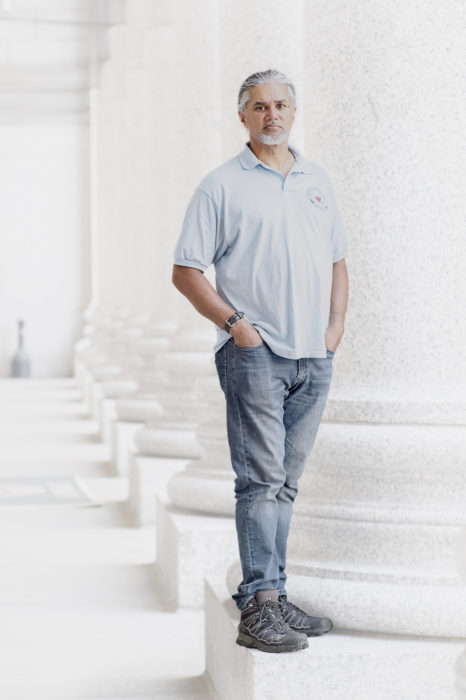
Ravi Ragbir
4:23
Throughout my interviews for this story, several recurring themes arose: Intimidation by guards persists, and detainees are pressured to sign a stipulated order of removal, in essence their own deportation sentence. Detainees are given little to no information about their rights, and they are cut off from their families and friends with little access to communication. Detainees maintain the facilities, from cleaning to cooking, and are paid $1 per day, despite lucrative contracts paid to the corporations and county jails that run these programs.
Perhaps the most alarming revelation was that detainees are encouraged to take daily sedatives, and when medical conditions arise, often they are given the same over-the-counter remedy, regardless of the ailment. Juan Hoyos, who spent six months at Elizabeth Detention Center, described the substandard medical care he witnessed. “There are people with diabetes, people with hypertension, people who come with kidney infections… and they are given the same medication,” he claims. “I got an allergic reaction. My body itched for six months. I went to the infirmary and they did nothing for me and I couldn’t sleep.” At one point, Hoyos and over 40 other detainees were quarantined in a dorm room for 40 days when there was a suspected case of tuberculosis. “Imagine us thinking we had tuberculosis. People got infections, everybody was coughing and they isolated us. We weren’t allowed to call our families.”
Hoyos had come to the United States seeking political asylum after trying to expose corruption in Colombia. Despite death threats and being forced into hiding for three years in his country, he says his time at Elizabeth Detention Center was “the most traumatic six months in my life.”
Hoyos, who had his own public relations company in Colombia, now works in a warehouse for $10 per hour and barely makes enough money to pay rent, eat and help support his daughters back home. He descends into tears several times during our interview, and apologizes for the transgression. “I don’t go out. I don’t leave my room. I’m shut in because of stress,” he says. “If you only knew how my life has changed. I feel like I’m drowning.” He soon recovers and shares his ambitions to start a business and become a job creator in the United States. His resilience is partially fueled by the fact that he can’t go back; there is only forwards. He clings to his identity as the last vestige that hasn’t been stripped from him.
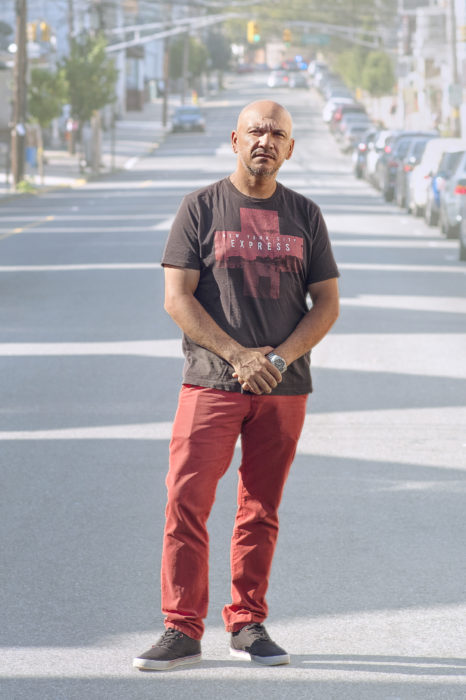
Juan Hoyos
3:22
Twenty years after Jama v. Esmor, conditions have only moderately improved in detention facilities. The attack dogs might be gone, but a national hotline run by CIVIC receives 14,000 calls per month citing abuses. In a report released last May by Human Rights Watch and CIVIC, “medical experts found numerous incidents of substandard and dangerous medical care, including failure to follow up on symptoms that required attention; medical personnel apparently practicing beyond the scope of their licenses and expertise; severely inadequate mental health care; the misuse of solitary confinement for people with mental health conditions; and sluggish emergency responses.”
Compounding matters, there is no time limit on detention, and immigration courts are so backlogged that as of April 2017, there were nearly 600,000 people waiting for a decision. The average wait time: 670 days.
According to Ravi Ragbir, who spent three years in prison and then two years in detention, immigrant detention is even tougher than prison. “There’s no difference between the two different systems technically,” he explains, “but there is a huge difference in terms of how you’re being treated.” He elaborates that the guards in detention are even more abusive because “they know that you are going to be deported, so you have no form of grievance.”
“If you commit a crime in the United States and you are convicted and sentenced, you still enjoy certain rights,” explains Rutgers’ Penny Venetis. “That does not apply to immigrants who are stopped at the border and detained. You only have the right to be free from gross physical abuse, maliciously inflicted…basically anything short of maiming and murdering someone.”
Over the past 20 years, Abu Bakar has steadily built a life not just for himself, but for those around him. He has worked with disabled adults and children, become a lab tech at a hospital, gotten certified to do HIV/AIDS testing, and started offering wellness counseling in his neighborhood. He also provides CPR and First Aid training, has a translation service between immigrants and lawyers, serves as a community liaison to the local police department, and has founded a nonprofit organization to build a clinic in Guinea.
Five years ago, Bakar became a citizen despite – or perhaps because of – what happened to him all those years ago. Sitting in his musty basement classroom, it is hard not to ponder the incongruity between the borderless human being in front of me, and the man defined by nationality, accent, skin color and official paperwork.
Once his initial reservations dissipate, Bakar is eager to talk for hours and share the details of his experience. In fact, he is even considering writing a book about his life. If only his story could help save us from repeating our mistakes.
The detainee photo/audio series was first exhibited as part of the Newark iteration of States of Incarceration, a national traveling exhibition created by students, returning citizens, and others directly affected by mass incarceration. States of Incarceration was created by the Humanities Action Lab with its academic and community partners from across the United States. The Newark exhibition at the Project for Empty Space Gallery was produced in partnership with Newest Americans, First Friends of NJ & NY, and the American Studies Graduate Program at Rutgers-Newark.
Words & Audio: Julie Winokur, Executive Director of Talking Eyes Media, has been a storyteller for over two decades, first as a magazine writer and then as a documentary filmmaker.
Photos: Ed Kashi is a photojournalist, filmmaker and educator dedicated to documenting the social and political issues that define our times. Ed is a member of VII Photo Agency, as well as a mentor, teacher and lecturer.

